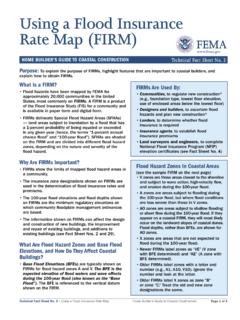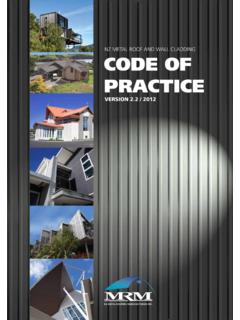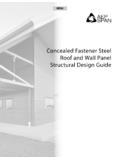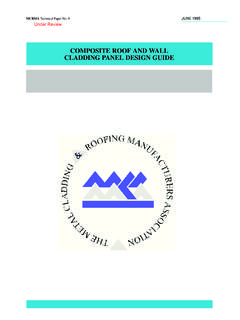Transcription of Roof-to-Wall and Deck- to-Wall Flashing
1 HOME BUILDER S GUIDE TO COASTAL CONSTRUCTIONT echnical Fact Sheet No. 23 Roof-to-Wall and deck - to-Wall Fact Sheet No. 23 Roof-to-Wall and Deck- to-Wall Flashing Home Builder s Guide to Coastal Construction Page 1 of 3 Purpose: To emphasize the importance of proper roof and deck Flashing , and to provide typical and enhanced Flashing techniques for coastal Issues Poor performance of Flashing and subsequent water intrusion is a common problem for coastal homes. Enhanced Flashing techniques are recommended in areas that frequently experience high winds and driving rain. Water penetration at deck ledgers can cause wood dry rot and corrosion of connectors leading to deck and deck Flashing Recommendations for Coastal Areas Always lap Flashing and other moisture barriers properly.
2 Use increased lap lengths for added protection. Do not rely on sealant as a substitute for proper lapping. Use fasteners that are compatible with or of the same type of metal as the Flashing material. Use Flashing cement at joints to help secure Flashing . At Roof-to-Wall intersections (see Figure 1): Use step Flashing that has a 2- to 4-inch-longer vertical leg than normal. Tape the top of step Flashing with 4-inch-wide (minimum) self-adhering modified bitumen roof tape. Do not seal housewrap or building paper to step Flashing . For deck Flashing : Follow proper installation sequence to prevent water penetration at deck ledger (see Figure 2). Leave gap between first deck board and Flashing to allow for drainage (see Figure 3). Use spacer behind ledger to provide gap for drainage (see Figure 3).
3 Use stainless steel deck connection Fact Sheet Nos. 19 and 20 for rake and eave 1 roof /wall Flashing Fact Sheet No. 23 Window and Door Installation Home Builder s Guide to Coastal Construction Page 2 of 3 Figure 2 Installation sequence for deck ledger Fact Sheet No. 23 Roof-to-Wall and Deck- to-Wall Flashing Home Builder s Guide to Coastal Construction Page 3 of 3 Figure 3 deck ledger k joistLedgerSpacer behind ledgerHousewrap or building paperHousewrap or building paperExterior sheathingFlashing drip-edgeZ- Flashing #2Z- Flashing #1 Dec k boardSidingGap for drainageFo undation wall










